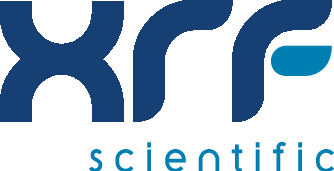How to Prepare Glass Beads for XRF Spectrometry
Every material contains a unique array of elements, imbuing them with attributes that contribute to their performance. By uncovering the elements of a material through elemental analysis, it’s possible to deliver quality control, ensuring any contamination is identified and that batch standards remain consistent. X-ray fluorescence (XRF) spectrometry can be utilized to understand a material’s elemental composition. It can be applied to a number of diverse industries, like archaeology and art for examining pigments, environmental science for monitoring pollution, and pharmaceuticals for analyzing drugs.
Sample preparation in XRF spectrometry is an essential step that can impact the outcome of the analysis. It can enhance the sample’s homogeneity, something that left unchecked can affect the validity of the measurements, prevent contamination, and improve the accuracy of the results. Glass beads can be formed during sample preparation and are a robust way of preserving the analysis’ accuracy. Read on to find out everything you need to know about how to prepare these glass beads for XRF spectrometry.
Understanding The Glass Beads Applied To XRF Spectrometry
Formed as disc-shaped samples, glass beads are utilized as a medium to obtain XRF measurements. They can be used to prepare a variety of samples, including rocks, soils, and minerals. Numerous benefits stem from making use of glass beads in XRF spectrometry. These beads are homogeneous, meaning the samples are extremely uniform to ensure there are no problems produced by particle size, and can prevent matrix effects from causing issues with the measurements. The application of these glass beads can also improve any irregularities in the surface area of the powders. Moreover, their smooth and flat surfaces can enhance the reproducibility of the results and even ensure the entire dissolution of harder samples, like alumina and silica.
The Glass Bead Production Process
Producing glass beads that’re ready for XRF spectrometry requires the following items:
- The powdered sample of the material
- A flux, fashioned from materials like lithium tetraborate
- A crucible made from platinum or platinum-gold
- A furnace or fusion machine
- A mold
- A balance
1. Forming The Sample
Take your sample and grind it down so it becomes a fine powder. That way, when it’s combined with the flux, it will do so more uniformly. Once this is completed, make sure to take the weight of the sample, which should normally be around 0.5 – 1 gram. Weighing the sample can help to understand what amount of flux is needed. It’s also required to help quantify elemental concentrations and ensure the samples are consistent, as their weights will be standardized.
2. Applying The Flux
Once the sample is weighed, it’s time to weigh out the flux. Normally, around 1:10 is the sample-to-flux ratio to follow. The sample and flux can be then mixed together within a container.
3. Increasing the Temperature
When the flux and sample have been combined, they can be placed within a crucible. This crucible is then moved to a furnace or fusion machine. Make sure the temperature is around 900-1200°c and then let the combined flux and sample melt for about 5-10 minutes. You can also gently swirl the crucible to support the homogeneity of the blend.
4. Placing The Mixture In The Mold
Now that the combined sample and flux is completely molten, it can be added to a mold, one that’s been preheated, so it can become a bead. Allow it to cool in the mold, however make sure it doesn’t cool too fast, as this could affect homogeneity or produce cracks.
5. Retrieving The Glass Bead
The glass bead can be taken out of the mold when it’s cooled down. Be sure to check over the bead to confirm it has no cracks and is homogenous and smooth. If the glass bead passes examination, it’s time to apply it to XRF spectrometry.
Obtain Robust Results In XRF Spectrometry With Glass Beads
XRF spectrometry is key to unlocking the various elements found within different materials. To understand the potential of these materials, XRF spectrometry must be undertaken with care to achieve excellent results. Using glass beads during sample preparation for XRF spectrometry can ensure the analysis remains accurate. Should your work necessitate the use of XRF spectrometry, we, XRF Scientific, believe that we can help. Not only can we offer further insights on XRF spectrometers, but we also have products available for sample preparation. Check out our website to uncover how we can improve your XRF spectrometry so you can achieve an outcome that will benefit your research.




